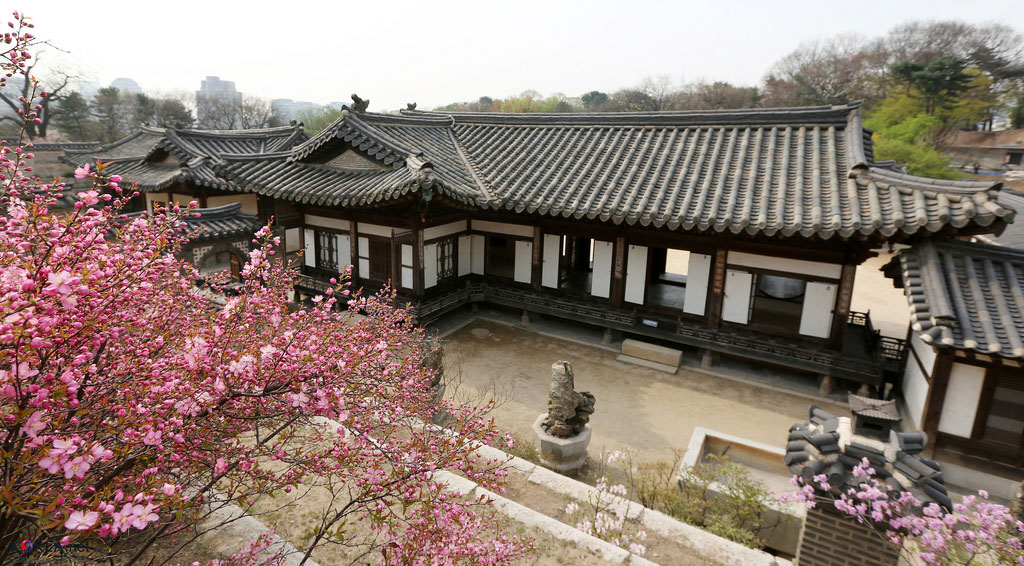Situated on the banks of the Han River and surrounded by mountains, Seoul is the most densely populated metropolis in South Korea. The Seoul Capital Area is home to over 25.6 million people, more than half of the country’s total population. The city maintains a beautiful balance between ancient traditions and hi-tech innovation, and boasts a thriving cultural and entertainment scene.
Seoul has a rich history that stretches back more than 2,000 years. There are an abundance of historical monuments for visitors to explore, including medieval palaces, ancient fortresses, traditional Buddhist temples and Confucian shrines. It is also home to five UNESCO World Heritage Sites; the iconic Changdeokgung Palace, Hwaseong Fortress, Jongmyo Shrine, Namhansanseong and the Royal Tombs of the Joseon Dynasty. In addition, there are over a hundred museums throughout the city.
The Korean capital is a modern economic powerhouse. Seoul serves as the headquarters for 15 Fortune Global 500 companies, including Samsung, LG, and Hyundai. It is also renowned as the world’s most wired city, offering the fastest internet connection speeds and free WiFi access in all public spaces.
Some of the city’s modern attractions include the iconic N Seoul Tower, the neo-futuristic Dongdaemun Design Plaza, the enchanting Moonlight Rainbow Fountain, and the Sevit Floating Islands. The Lotte World Tower is the fifth tallest building in the world, and contains art galleries, cafés, a luxury hotel and an observation deck offering spectacular panoramic views over the city.

Seoul’s Changdeokgung Palace, one of the South Korean capital’s most iconic attractions.
Koreans tend to be very fashion-conscious, and Seoul offers great shopping opportunities. Visitors will enjoy browsing the many boutiques and malls filled with designer brands. These include the COEX Mall, known as the world’s biggest underground shopping mall. The popular Times Square Mall is home to the impressive Starium Theatre, which features the largest cinema screen on the planet.
For a relatively small nation, South Korea punches above its weight on the global stage in terms of cultural exports. The country is home to a booming entertainment industry, with the phenomenon known as “Hallyu” or “Korean Wave” sweeping across Asia. Both K-Pop artists and K-drama series have attracted dedicated fanbases not only throughout the region, but worldwide. Seoul is at the center of this movement, with devotees flocking to visit the city in the hope of catching a glimpse of their idols.
The enjoyment of food and drink is given high priority in Korean culture. Eating out in Seoul is extremely popular, evidenced by the countless packed restaurants which line the streets. The city has a bustling and vibrant nightlife, with many bars and clubs open through till 6am.
This fascinating destination offers an enchanting blend of the ancient and modern, and attracted over 10 million international visitors in 2016, making it the world’s tenth most popular destination for tourists.
Flying to South Korea
All private (non-revenue) and charter (non-scheduled revenue) operators must obtain a landing permit for flying into South Korea. The lead time required is approximately 24 hours. The following information is required when sending a request for the permit:
- Operator name
- Address
- Aircraft type
- Maximum take-off weight (MTOW)
- Aircraft registration
- Call sign
- Name of Captain
- Details of passengers and crew
- Purpose of flight (private or non-revenue)
- Cargo load in kilograms
Airport Options in Seoul
Incheon International Airport (IATA: ICN, ICAO: RKSI) is the largest airport in South Korea, and the primary airport serving its capital city. Incheon airport is renowned for being one of the most modern and cleanest airports in the world. RKSI functions as an Airport of Entry (AoE), with customs and immigration operating 24/7. The airport caters to General Aviation (GA) and offers full ground handling services, together with passenger and crew lounges, restaurants and duty-free shops. Airport slot bookings and parking permits are mandatory. RKSI allows aircraft parking for up to 72 hours only.
Gimpo International Airport (IATA: GMP, ICAO: RKSS) is the secondary airport serving the city. Situated approximately 15km west of central Seoul, Gimpo airport is the third largest in South Korea, and served over 23 million passengers in 2015. RKSS functions as an AoE, however its customs and immigration and FBO operating hours are restricted to between 06:00 and 23:00 local time. Gimpo Airport caters to GA and offers passenger and crew lounges, as well as numerous restaurants and duty-free shops. Airport slot booking and aircraft parking permits are required, however there are no restrictions on long-term aircraft parking.
Choosing the best airport when flying to Seoul depends upon the individual requirements of the operator. RKSI is the most flexible in terms of operating hours. However if the aircraft will remain in Seoul for more than three days, RKSS would be the better choice for parking. Jetex recommends that all flight requests should be sent at least three days ahead of the planned arrival date.
Arrange Your next Trip with Jetex
Planning a trip to Seoul? Contact our team today to arrange your flight!
Jetex is a global leader in business aviation. Our extensive network of FBOs and Ground Support Stations enables us to provide a full range of services, wherever you may be traveling. We offer global trip planning, ground handling, fuel uplifts and bespoke concierge services. Our dedicated operations teams are on standby to assist you 24/7.
To find out how you can benefit from our services, please contact us on +971 4 212 4000 or email info@jetex.com.



